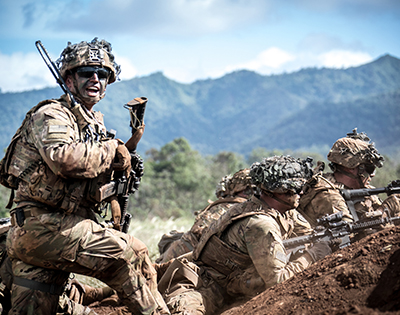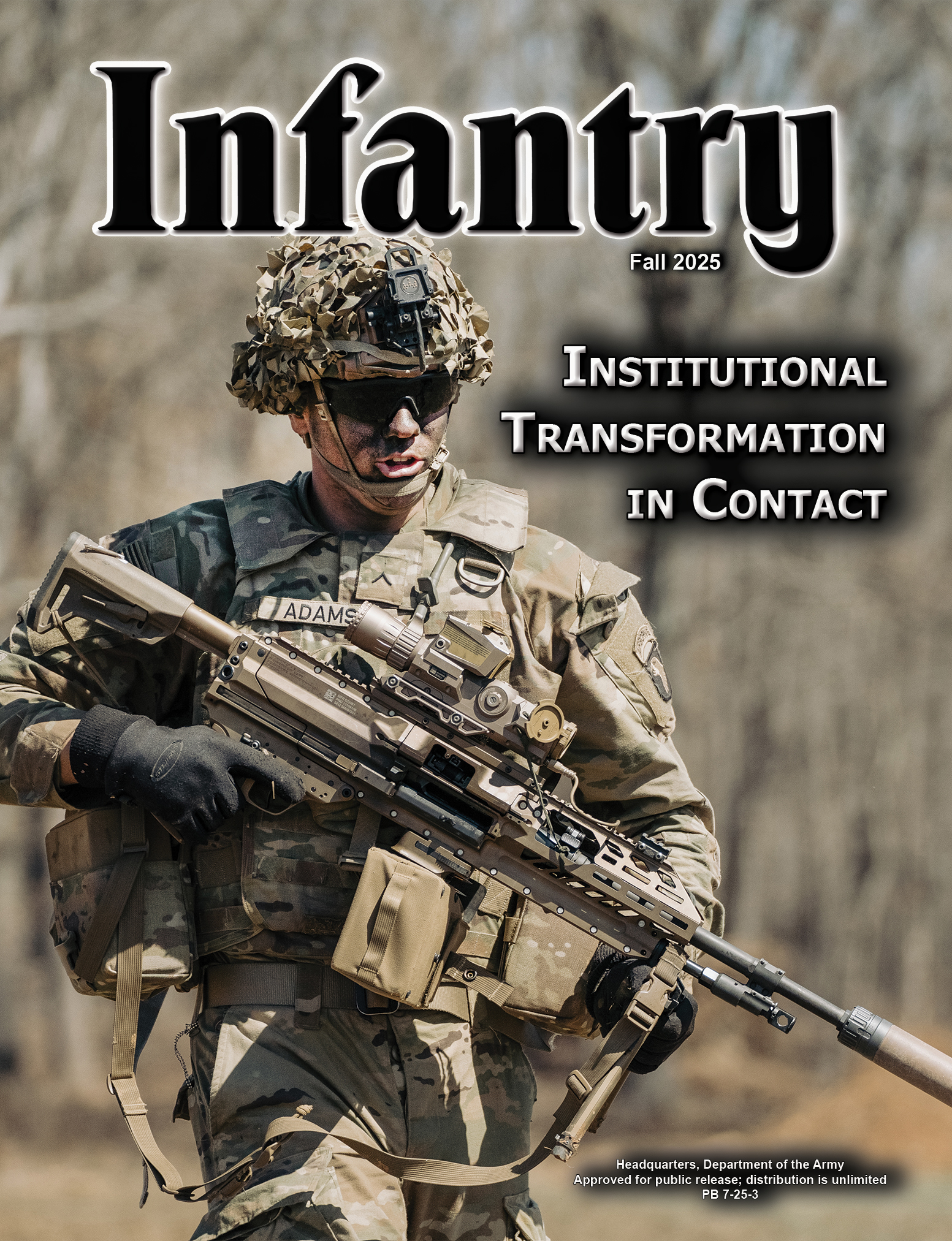Latest Articles
The Infantry Master Trainer Strategy: Transforming Marksmen into Master Trainers
Maj. Richard Chandler
The Infantry Master Trainer Strategy (IMTS) is a comprehensive modernization initiative aimed at overhauling U.S. Army Infantry School (USAIS) programs of instruction (POIs) to create formation-based master trainers for infantry formations. It was developed to govern and standardize institutional training for weapons and systems-based Infantry functional training across the force, ensuring consistency and excellence in leader development and readiness.
Latest Articles
The Knife’s Edge: Adapting Army Combatives for Tomorrow’s Fight
Capt. Luke Hodsden
Earlier this year, a chilling viral video out of Ukraine emerged depicting the stark reality of modern warfare. The footage showed a Ukrainian soldier engaging in brutal hand-to-hand combat with a Russian soldier, who mortally wounds the Ukrainian with his knife. As the Ukrainian soldier lay dying, he spoke to his enemy: "This is the end. Let me die in peace… You were better." The raw footage is a reminder that even in the age of drone warfare and precision strikes, hand-to-hand engagements remain a real possibility for Soldiers on the ground
Latest Articles
Transformation Before Contact: A Rapid Transition to Improve Quality of Life, Instructors, and Instruction
Capt. Samuel J. Quattrone
The Infantry Basic Officer Leader Course (IBOLC) at Fort Benning, GA, is the first step for aspiring Infantry officers who need branch qualification and certification before joining the operational force. The POI has seen different areas of emphasis evolve throughout the years as the art and science of war have changed and the expectations of junior officers have adapted to meet the requirements of the global force… IBOLC has recently undergone a major structural transformation into a committee model to maximize the quality of instructor — and instruction — that is rooted in the basics: troop leading procedures (TLPs), unit training management (UTM), fires integration, fitness, and leadership.
Latest Articles
Preparing for the Next Fight: The Final FTX at Infantry OSUT
Capt. Charles J. Gulotta and Lt. Col. Michael B. Moore
As the U.S. Army shifts its focus from counterinsurgency operations to large-scale combat operations (LSCO), the U.S. Army Infantry School at Fort Benning, GA, has taken deliberate steps to reshape initial entry training. At the center of this transformation is the Infantry One Station Unit Training (OSUT) pipeline — a 22-week course designed to forge fit, disciplined, lethal, and resilient Infantry Soldiers. The culminating event of this transformation is the field training exercise (FTX), a rigorous, multi-day, immersive event that evaluates each trainee’s tactical competence, leadership potential, and mental fortitude under conditions that replicate the demands of LSCO
Latest Articles
The MFRC and the Future of Army Reconnaissance
Capt. Preston B. Wiley
At the Reconnaissance and Surveillance Leaders Course (RSLC), our team trains more than 300 students annually across the joint force — including Infantry scouts, reconnaissance Marines, tactical air control party (TACP) Airmen, and a range of special operations personnel. Our program of instruction spans fundamental small-unit tactics, high frequency (HF) radio communications, advanced land navigation, and troop leading procedures (TLPs)/military decision-making process (MDMP) as applied to reconnaissance teams. Although RSLC has operated for over 25 years, the force it serves, and the demands placed upon it, have changed significantly.
Looking for a specific topic or author?
Search the Subject/Author Index.
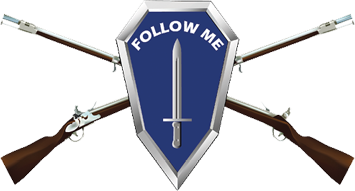
INFANTRY Links
US Army Infantry School
Warrior University
Ranger Training Brigade
Donovan Research Library
MCoE Self-Study Program
Spotlight on...

The U.S. Army Ranger School
Infantry in Action

Infantry in Action

Infantry in Action

Infantry in Action
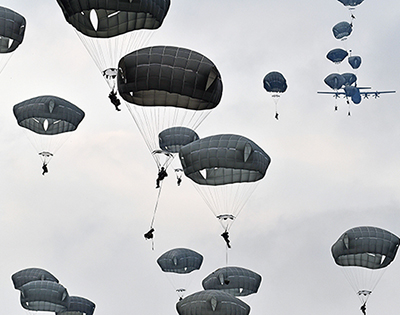
Infantry in Action
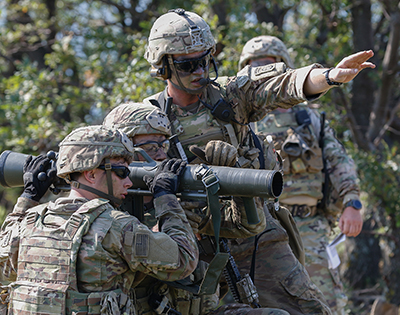
Infantry in Action
